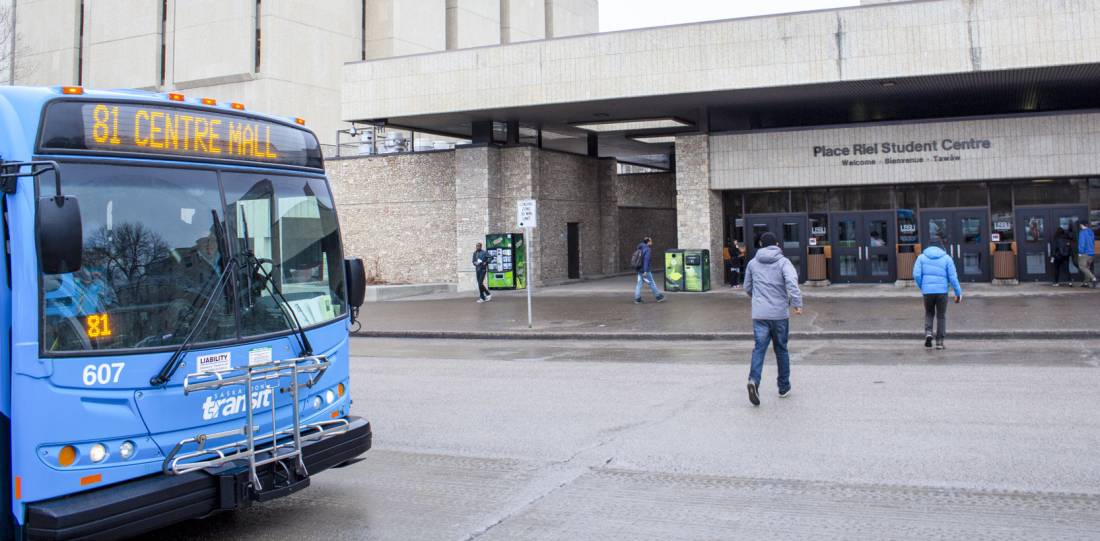As Saskatoon’s population has reached approximately 271,000 and is projected to grow to 500,000 in the years to come, the Saskatoon City Council is executing plans to accommodate the growing population. One of these accommodations is redesigning the city’s transit system.

There is currently no indication whether or not the Bus Rapid Transit system will make use of the Place Riel Transit Terminal.
As of Nov. 20, City Council has approved the Preferred Configuration Report for the new Bus Rapid Transit system. BRT is a form of bus-based transit that aims to improve the travel speed, reliability and overall customer experience of taking the bus. The City of Saskatoon has hired the design firm HDR Inc. to plan the new transit system.
John Hubbell, Western Canada transportation practice leader for HDR, explains that there will be transit enhancements to make BRT successful. For instance, the transit-signal priority measures will give buses priority at traffic lights by means of sensors, while geometric priority measures and runningways will address the infrastructure challenges impeding rapid transit.
“Transit-signal priority measures, geometric priority measures, improved bus stations, customer-information systems and runningway improvements are the key components of BRT,” Hubbell said.
Other enhancements will improve the rider experience by adding shelters at bus stops along the route, Hubbell explains. Digital screens will also be installed in bus shelters to provide live tracking of buses for commuters.
The Preferred Configuration Report created by HDR acts as a framework for the project, but the company is still working on the final plan, Hubbell says.
He notes that the new transit system will decrease transit travel times and improve reliability. Hubbell also explains that the new rapid transit plan has a goal of insuring that all BRT buses do not leave a stop more than 3 minutes late 90 per cent of the time.
“If we do our work right, … you can get improvements in bus travel times anywhere from five to 20 per cent. With the system, we experience over 90 per cent reliability,” Hubbell said.
The plan proposes two BRT lines, a Blue Line that will run north/south and a Red Line, with a segment along College Drive, that will run east/ west. A map of the two routes is available on the city’s website.
It is unclear how BRT on College Drive will affect the existing Place Riel transit hub. Deena Kapacila, vice-president operations and finance of the University of Saskatchewan Students’ Union, is responsible for transit service issues. Kapacila was reached to comment on the issue but did not respond in time for publication.
Matt Wolsfeld, community engagement co-ordinator for the U of S Office of Sustainability, explains that the new transit plan will help meet the objectives of the Campus Sustainability Plan.
“Public transit has an incredibly important role to play in sustainability by offering alternative and sustainable means of transportation throughout the city,” Wolsfeld said, in an email to the Sheaf.
As an alternative to single-occupant vehicles, Wolsfeld believes public transit is crucial for the city’s growth and that a modernized transit system should make it easier and faster for students to travel around the city.
“A strong, well-planned, efficient and convenient public-transit system is necessary for a city to sustainably grow into the future,” Wolsfeld said.
Students can contribute their opinions to the planning process at community-engagement events until February 2018. The plan is expected to be completed in April 2018, but full implementation is not expected for at least three years.
Hubbell explains that, while HDR and City Council are doing their best to create a plan that will work for Saskatoon, the community may need to be patient for the time being.
“There may be some growing pains while we work to design and implement these changes,” Hubbell said. “And, we’re not closing the door to change in the future.”
—
Sydney Boulton
Photo: Kaitlin Wong